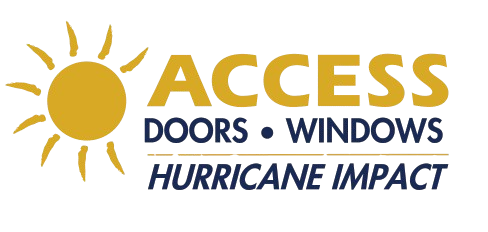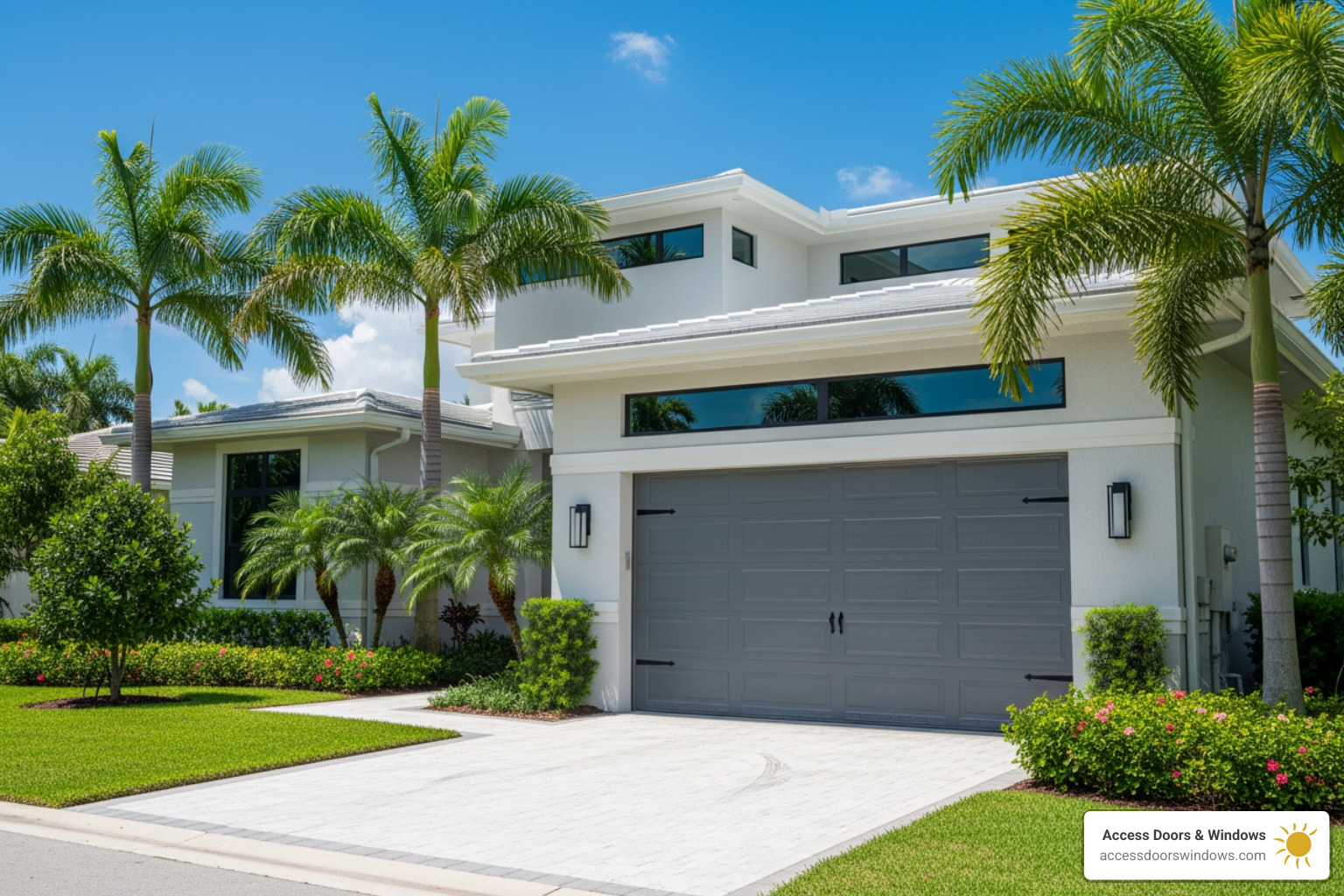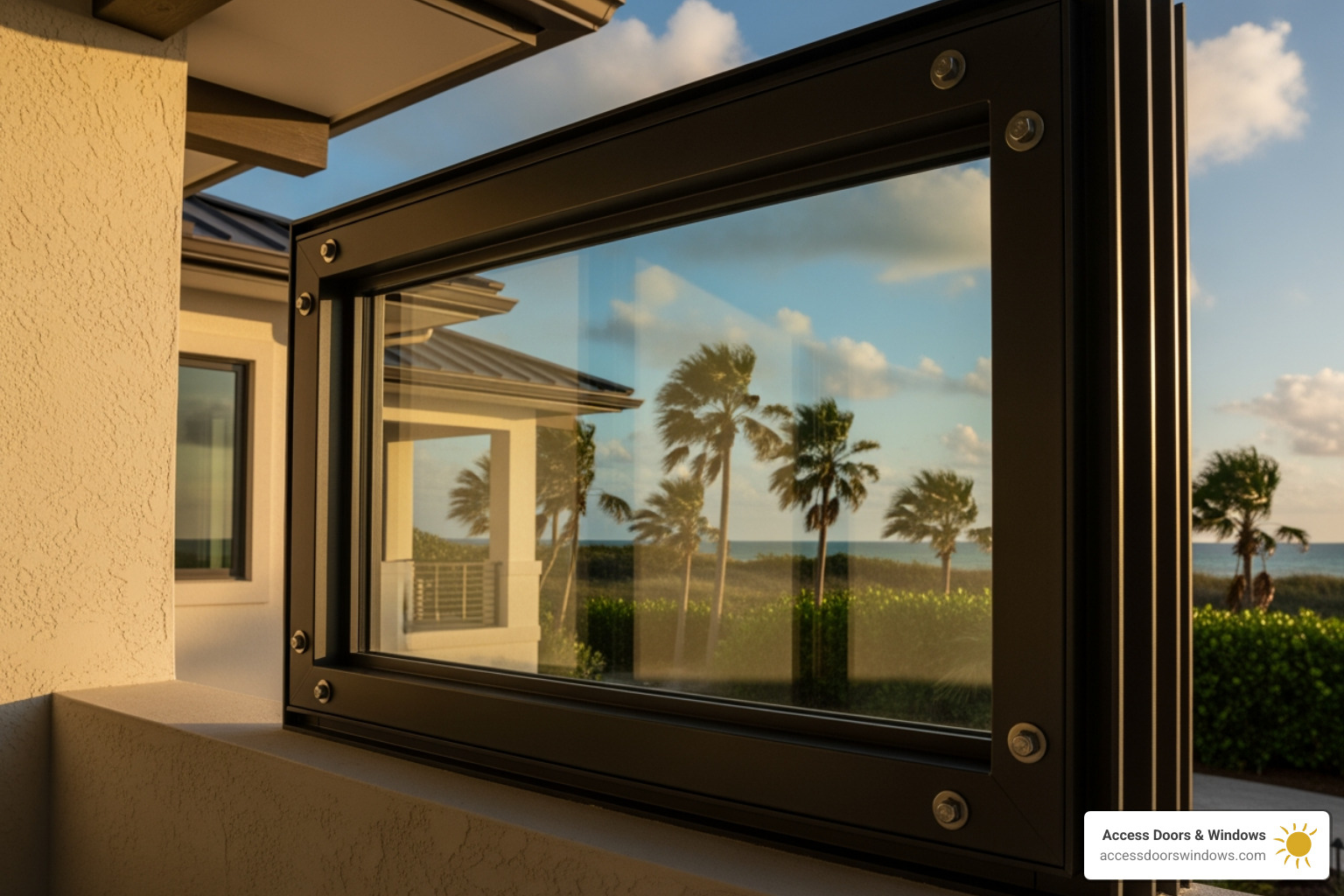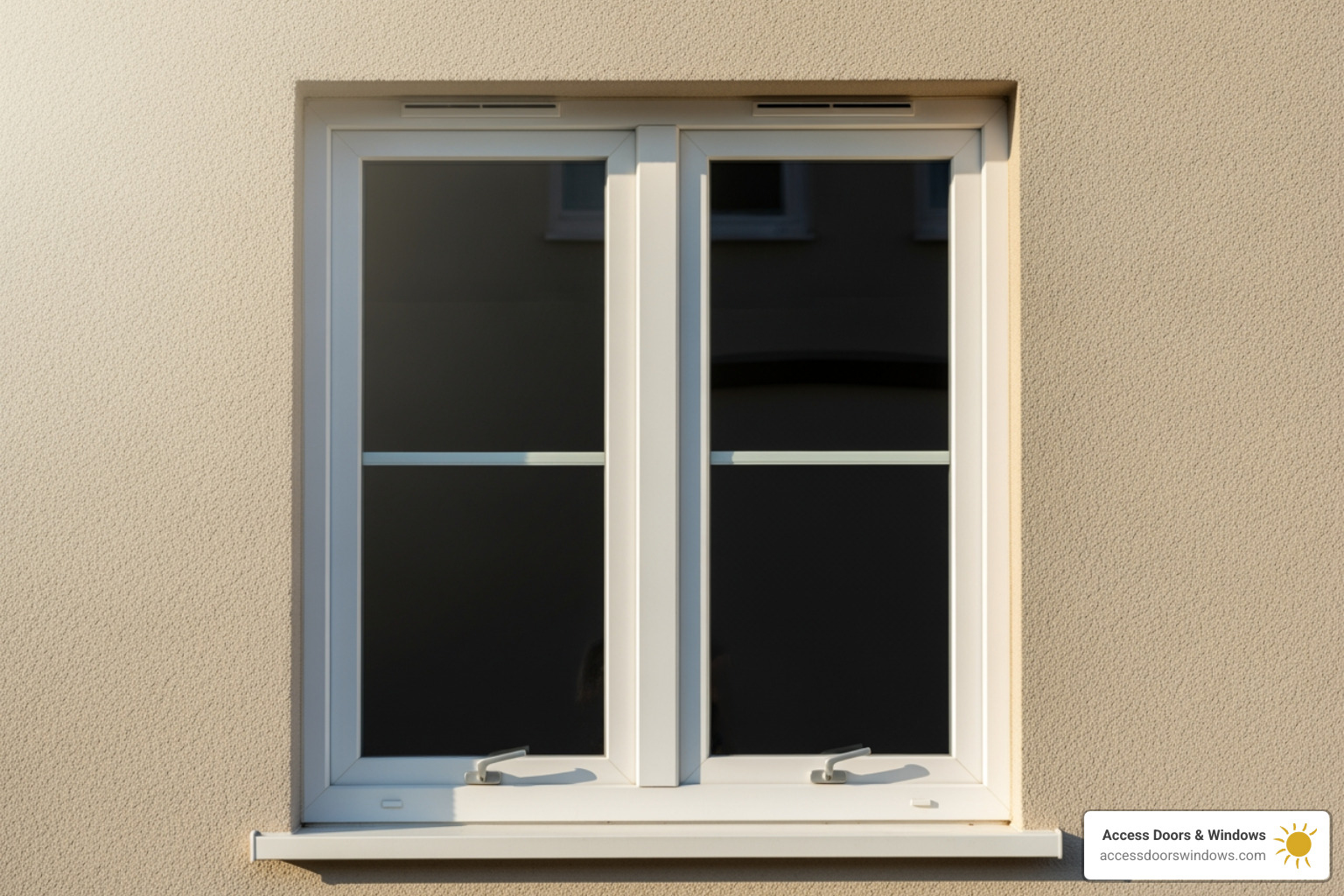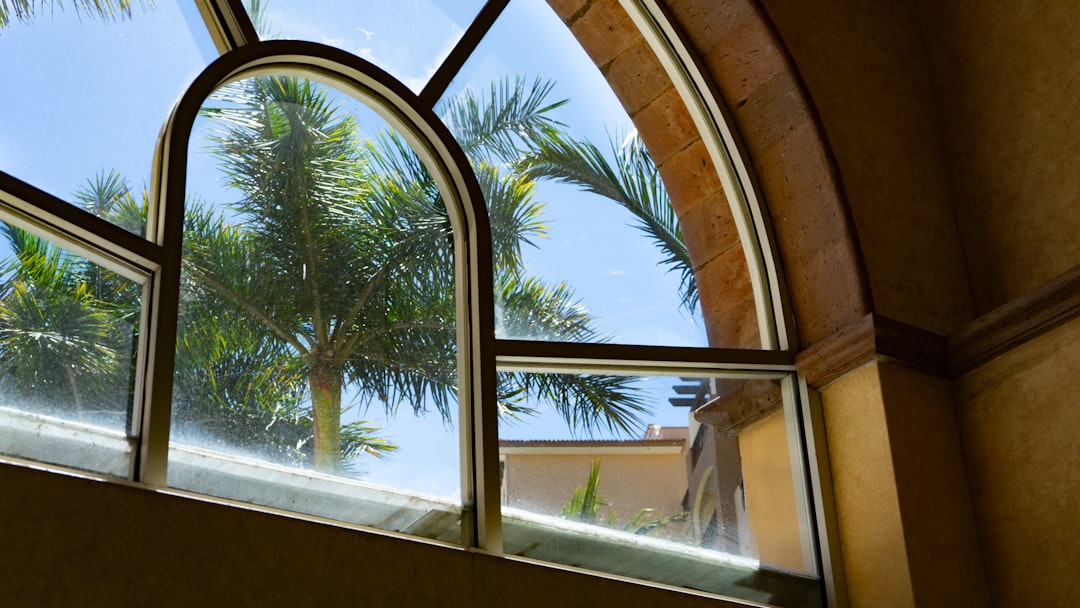How do I know if my windows are hurricane proof: 4 Vital Checks
Why Knowing Your Window’s Hurricane Rating Matters
How do I know if my windows are hurricane proof? You can identify hurricane-proof (impact-resistant) windows by checking for permanent labels in the glass corners, performing a reflection test, inspecting the frames, or reviewing home documents.
Quick identification methods:
- Check for permanent markings – Look in the corner of the glass for etched manufacturer names, certification codes (TAS, ASTM), or Design Pressure (DP) ratings of 50 or higher.
- Perform the reflection test – Hold an object up to the glass at an angle; two or more reflections indicate laminated, impact-resistant glass.
- Tap the glass gently – Laminated glass sounds denser and more solid than standard single-pane glass.
- Inspect the frames – Hurricane windows have reinforced vinyl, aluminum, or composite frames with multi-point locking systems.
- Review home documents – Check purchase paperwork, builder specifications, or permit records for window certifications.
In a hurricane-prone area like South Florida, knowing if your windows can withstand a major storm is a critical first step. Since 2002, Florida building codes have mandated specific window protections in coastal regions, but older homes may not meet these standards. Verifying that your windows are hurricane-resistant is essential for protecting your family, property, and financial investment.
Hurricane impact windows use laminated glass and reinforced frames to resist wind-borne debris. Even if the glass cracks, it stays in the frame, keeping wind and rain out. This prevents the dangerous internal pressure buildup that can lift the roof off a home, protecting your entire structure.

The Anatomy of a Hurricane Impact Window: What Sets It Apart?
To answer how do I know if my windows are hurricane proof, you first need to understand what makes them special. Impact windows are engineered systems designed to stand between your family and nature’s most powerful forces.
The key is laminated glass, which functions like a car’s windshield. It consists of two sheets of glass bonded to a tough, flexible plastic interlayer, usually made of polyvinyl butyral (PVB). This interlayer is the hero of the system.

When debris hits the window—tested at speeds of 50 feet per second—the glass may crack, but it won’t shatter. The glass fragments adhere to the PVB interlayer, keeping the window sealed within its frame. This prevents wind and rain from entering and stops flying glass shards.
This is critical for how hurricane impact windows work to protect your home. If wind penetrates your house, it creates an upward pressure that can rip the roof off. By keeping the building envelope sealed, impact windows protect your home’s structural integrity.
However, the glass is only part of the solution. These windows also feature reinforced frames made from heavy-duty aluminum, vinyl, or composite materials. They are engineered to handle extreme wind pressure and anchor the laminated glass securely, ensuring the entire unit works as a resilient system.
Standard vs. Impact Glass
Not all strong glass is the same. Understanding the differences helps you identify what’s protecting your home.
| Feature | Standard Glass (Annealed) | Tempered Glass | Impact Glass (Laminated) |
|---|---|---|---|
| Construction | Single pane, basic mixture of sand and limestone | Single pane, heat-treated for extra strength | Two sheets of glass bonded by a strong PVB interlayer—thicker and more complex |
| Breakage Pattern | Breaks into large, sharp, dangerous shards | Shatters into small, relatively harmless pebble-like pieces | May crack on impact, but the interlayer holds everything together in the frame |
| Strength | Weakest option, breaks easily | About 4-5 times stronger than standard glass | Designed to resist debris impacts and extreme wind pressure up to 200 mph |
| Safety Feature | None—high risk of serious injury | Safety glazing that reduces injury from broken glass | Safety glazing that prevents debris penetration and maintains your home’s seal |
| Primary Use | Basic windows, picture frames, older homes | Shower doors, car side windows, areas where people might fall into glass | Hurricane-prone regions, security upgrades, noise reduction |
| Hurricane Protection | None whatsoever—shatters immediately | None—still shatters and lets wind and water inside | Excellent protection against debris, wind, water, and pressure buildup |
| Identification | Thin, single reflection, often has removable stickers | May be marked “tempered” or “safety glass” but no visual difference | Permanent etchings in corners, feels thicker, shows multiple reflections |
The key takeaway: tempered glass is not impact-resistant glass. While safer than standard glass, it still shatters upon impact, leaving your home exposed to wind and water. Impact glass, with its lamination process, is specifically designed to stay intact even when broken, creating a barrier that holds strong when you need it most.
Hurricane-Resistant vs. Hurricane-Proof
We prefer the term “hurricane-resistant” over “hurricane-proof” because it manages expectations. No product can be completely invulnerable to a Category 5 hurricane.
What hurricane-resistant windows can do is withstand rigorous testing for devastating wind loads and high-speed debris impacts. They are built to resist penetration and stay in their frames, even if the glass cracks. The goal isn’t to emerge unscathed—it’s to protect your building envelope and prevent catastrophic structural failure.
An impact window might crack from a direct hit, but it won’t shatter into your home or allow wind to blow your roof off. That’s the crucial difference between resistance and invulnerability. As a licensed, insured, USA Military Family-owned business serving Florida, we provide honest information about products that truly work.
How Do I Know If My Windows Are Hurricane Proof? 4 Visual Inspection Methods
For homeowners in Florida—from Fort Myers to Boca Raton—answering how do I know if my windows are hurricane proof is vital for safety. You don’t need to be a contractor to find clues. Here are four practical ways to investigate your windows.
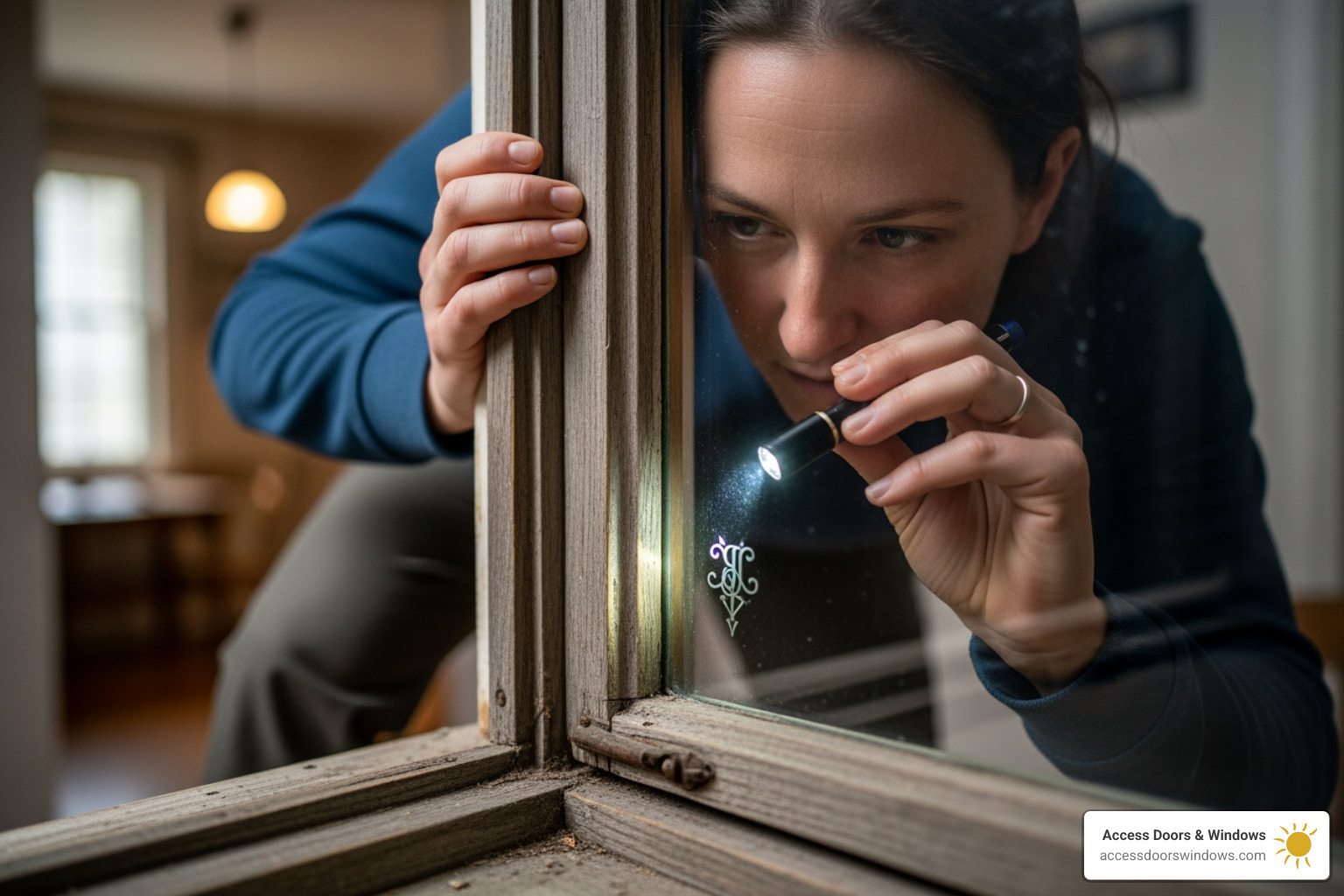
Look for Permanent Labels and Etchings
This is the most definitive method. Certified hurricane impact windows must have permanent identification marks, either etched into the glass or on a durable label, usually in a corner.
Look for the manufacturer’s name, manufacturing date, and crucial certification information. Codes like TAS 201, 202, or 203 indicate compliance with Miami-Dade County’s strict standards for High-Velocity Hurricane Zones. You might also see ASTM E1886 and E1996 markings, which are national impact resistance standards. A Design Pressure (DP) rating of 50 or higher is another key indicator for hurricane zones. These markings are your window’s proof of performance.
Perform the Reflection Test
This simple trick helps identify the multiple layers of laminated glass. Stand back from your window and hold an object like a pen up to the glass, viewing its reflection at a slight angle.
If you see two or more distinct reflections (often appearing as a “ghosted” double image), you likely have multi-layer laminated glass. A single, clear reflection usually means it’s standard single-pane glass with no hurricane protection. This quick check is a remarkably reliable indicator.
How do I know if my windows are hurricane proof without any labels?
If labels are missing, you can still check for physical characteristics.
First, try the tap test: knock on the glass with your knuckle. Impact-resistant laminated glass produces a denser, more solid sound than the thinner ring of standard glass. This is due to its thicker, multi-layer construction.
Next, examine the frames. Hurricane windows require robust frames to hold the glass under pressure. Look for heavy-duty, reinforced vinyl, aluminum, or composite materials that appear thicker than standard frames. Also, check for secure, multi-point locking systems, which help seal the window against high winds.
Check Your Home’s Paperwork or Consult a Professional
If visual checks are inconclusive, review your home sale documents, builder records, or local permit history. Window installation permits in coastal areas should specify if they meet impact standards. This information is often available from your city or county office.
For a definitive answer, consult a professional. At Access Doors & Windows, we help homeowners across South Florida verify their window protection. We can identify certifications, assess your windows’ condition, and provide a clear, honest evaluation without high-pressure sales tactics.
Understanding Certifications and Building Codes
In Florida, building codes are essential for hurricane survival. After Hurricane Andrew in 1992, Florida enacted some of the nation’s strictest codes. Understanding these regulations is key to answering, how do I know if my windows are hurricane proof?
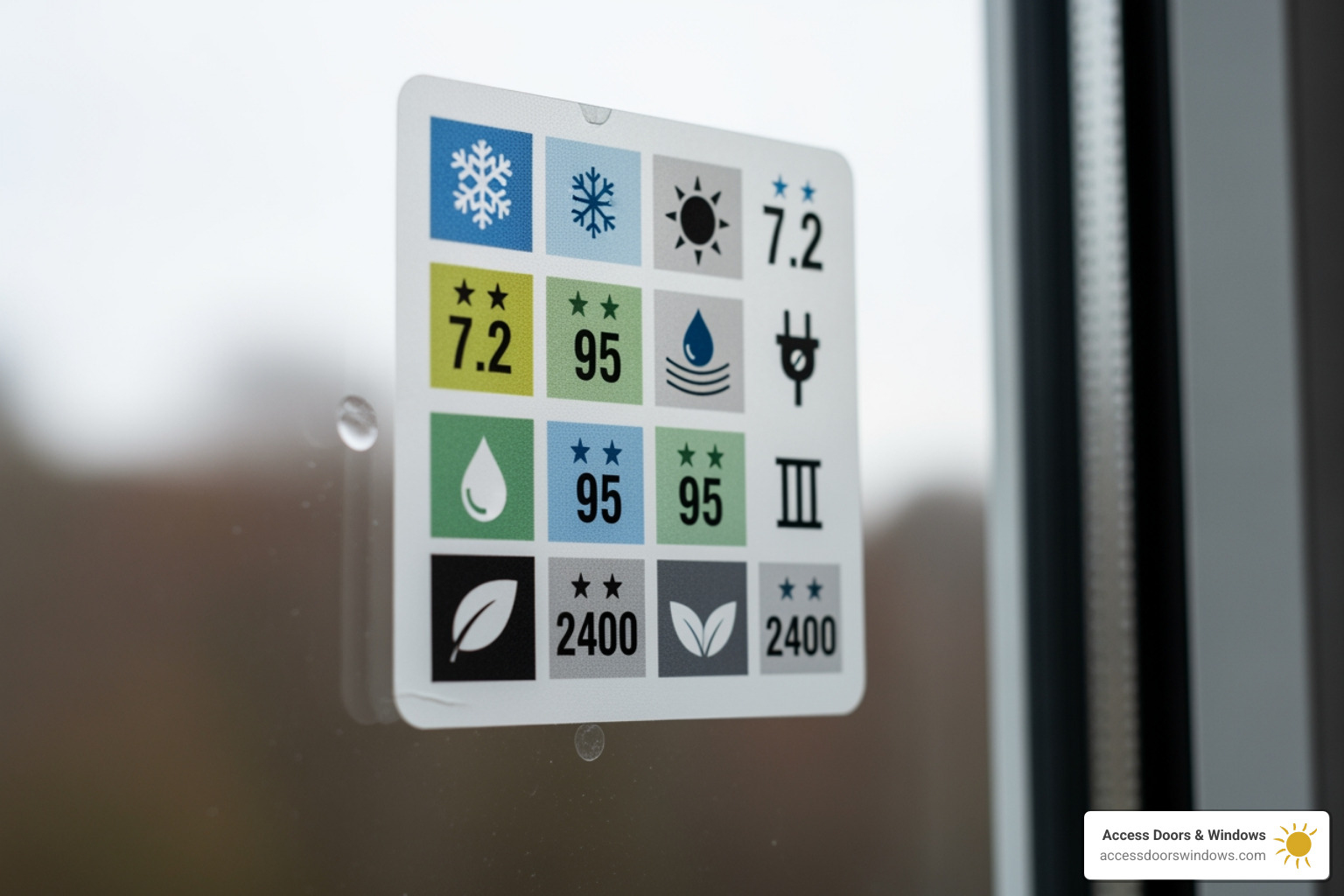
The Florida Building Code (FBC) is the foundation of construction safety in the state, with a strong emphasis on hurricane protection. Requirements vary based on your location’s wind speed designation.
In a High-Velocity Hurricane Zone (HVHZ), such as Miami-Dade and Broward Counties, the rules are even more stringent. In these zones and other coastal areas with high wind speeds, impact-resistant windows (or other approved protection) are mandatory for new construction and major renovations. The FBC also oversees the Florida Product Approval System, ensuring all products meet their stated protection levels. A Miami-Dade County Notice of Acceptance (NOA) is one of the most respected certifications, signifying a product has passed the toughest tests. You can find more information on your local requirements at sites like the State and county building codes website.
How do I know if my windows are hurricane proof by their certifications?
Window labels contain a variety of codes that serve as proof of testing and compliance.
- TAS 201, 202, 203: These are Miami-Dade’s testing protocols, considered the industry’s gold standard. They include tests for large missile impact (TAS 201), structural wind pressure (TAS 202), and cyclic wind pressure (TAS 203). Passing all three means the window is built to withstand severe conditions.
- ASTM E1886 and E1996: These are national standards for testing performance against windborne debris and pressure cycling during a hurricane.
- Design Pressure (DP) rating: This number indicates how much wind pressure (in pounds per square foot) a window can handle. For hurricane zones in South Florida, a DP rating of 50 or higher is recommended. Soft-Lite Windows & Doors offers a helpful explanation of these ratings.
- AAMA Gold Label: This label, when marked ‘Impact Resistant,’ confirms the window meets industry standards like ASTM E1886 and provides transparent details about its testing.
Who Needs Impact Windows in Florida?
If your home is in an HVHZ (Miami-Dade and Broward Counties) or within one mile of the coast where wind speeds exceed 110 mph, the Florida Building Code mandates impact protection for new construction and major renovations.
Most of Florida is also designated as a wind-borne debris region, where protection against flying objects is necessary. Standard windows cannot withstand the impact of debris traveling at hurricane-force speeds.
Even if not required by code, impact windows are one of the smartest investments for any Florida homeowner. With storms becoming more frequent and intense, proactive protection is a wise choice. As a USA Military Family-owned business, we understand the importance of protecting what matters most and can help you steer the requirements for your home.
Beyond the Storm: The Year-Round Benefits and Considerations
Hurricane impact windows work for you every day, not just during storm season. While storm protection is their primary purpose, they offer significant year-round improvements to your home’s comfort, security, and value.
Added Perks: Security, Noise Reduction, and Energy Savings
The features that protect your home from a hurricane also improve your daily life:
- Improved Security: The laminated glass and reinforced frames that stop storm debris also create a formidable barrier against forced entry, giving you peace of mind.
- Noise Reduction: The multi-layer construction is incredibly effective at dampening outside sounds like traffic, lawnmowers, and barking dogs, creating a quieter indoor environment.
- Energy Savings: Impact windows, especially with Low-E coatings, are highly energy-efficient. They reflect heat, keeping your home cooler in the summer and reducing air conditioning costs. Look for a Solar Heat Gain Coefficient (SHGC) of 0.40 or less and a U-factor of 0.65 or lower for maximum savings in Florida.
- UV Protection: The laminated glass blocks 99.7% of harmful UV rays, preventing your furniture, carpets, and artwork from fading.
- Insurance Discounts: Florida law requires insurers to offer discounts for wind-mitigation features. Certified impact windows can significantly reduce your homeowner’s insurance premiums, sometimes by up to 50%.
- Increased Home Value: Impact windows are a major selling point in hurricane-prone areas, translating directly to a higher resale value for your property.
Understanding the Costs, Lifespan, and Maintenance
It’s important to understand the practical aspects of owning impact windows.
- Cost: Impact windows typically cost 2-3 times more than standard windows, with a whole-home installation ranging from $2,000 to $12,000. The price depends on window size, style, frame material (aluminum, vinyl), and glass type (e.g., insulated laminated glass). While the upfront cost is higher, long-term savings on energy and insurance, plus avoided storm damage, make it a sound financial investment.
- Lifespan: With proper installation and care, high-quality impact windows can last from 10 to 40 years.
- Maintenance: Maintenance is simple. Clean the glass with mild soap and a soft cloth. Periodically inspect seals and weatherstripping for damage. Lubricate tracks and locks annually, and ensure weep holes in the frame are clear of debris.
Frequently Asked Questions about Hurricane Impact Windows
As Florida-based installers, we at Access Doors & Windows hear many common questions from homeowners about storm protection. Here are answers to some of the most frequent concerns.
Can impact windows still break or crack?
Yes, an impact window can crack under extreme force from a large or heavy object. This is why they are called “hurricane-resistant,” not “hurricane-proof.” However, they are designed not to shatter. The strong polymer interlayer holds the cracked glass fragments together, keeping the window sealed within its frame. A cracked but intact window has successfully done its job: it has maintained the home’s building envelope, preventing wind and water intrusion and protecting your family.
Do I still need shutters if I have impact windows?
No, you generally do not need shutters if you have certified impact windows. They are designed as a complete, standalone hurricane protection system that meets the same building codes that would otherwise require shutters. This means when a storm approaches, you simply lock your windows instead of wrestling with heavy panels. This convenience and constant protection are major benefits. While some homeowners add shutters for extra redundancy, it is not typically required.
What is the difference between an impact window and a regular double-pane window?
This is a common point of confusion. While both have multiple layers of glass, they serve different functions.
- A regular double-pane window (or insulated glass unit) has two panes of glass separated by an air or gas-filled space. This gap provides insulation to improve energy efficiency but offers no protection from impacts. It will shatter if hit by debris.
- An impact window has two panes of glass laminated together with a tough polymer interlayer. This construction is engineered specifically to resist impacts from flying debris. The frames are also much stronger and reinforced to withstand extreme wind pressure.
In short, double-pane windows are for energy efficiency, while impact windows are for survival during a hurricane (and often provide energy benefits as well).
Conclusion: Securing Your Home with Confidence
Understanding how do I know if my windows are hurricane proof is the first step toward protecting your family and home. We’ve covered how to identify impact-resistant windows through labels, reflection tests, and physical checks, and explained the critical certifications that guarantee their strength.
Living in Florida means respecting the power of hurricanes, but it doesn’t mean living in fear. With certified impact-resistant windows, you can have peace of mind knowing your home’s building envelope is secure. These windows also work for you year-round, providing improved security, noise reduction, and energy savings, making them an investment that pays dividends.
At Access Doors & Windows, we understand this decision’s importance. As a USA Military Family-owned business with offices in Ft. Myers and Deerfield Beach, we’ve seen what proper protection can prevent. We are licensed and insured installers serving Palm Beach, Broward, Lee, and surrounding counties, specializing in energy-efficient, code-compliant hurricane windows and doors from top brands like PGT and CGI.
If you’re still unsure about your windows, we’re here to help. We offer honest guidance and expert installation without high-pressure sales tactics. We can inspect your current windows and, if needed, help you upgrade to certified hurricane impact windows that will protect your home for decades.
Your family’s safety and your peace of mind are priceless. Let’s secure your home together.
